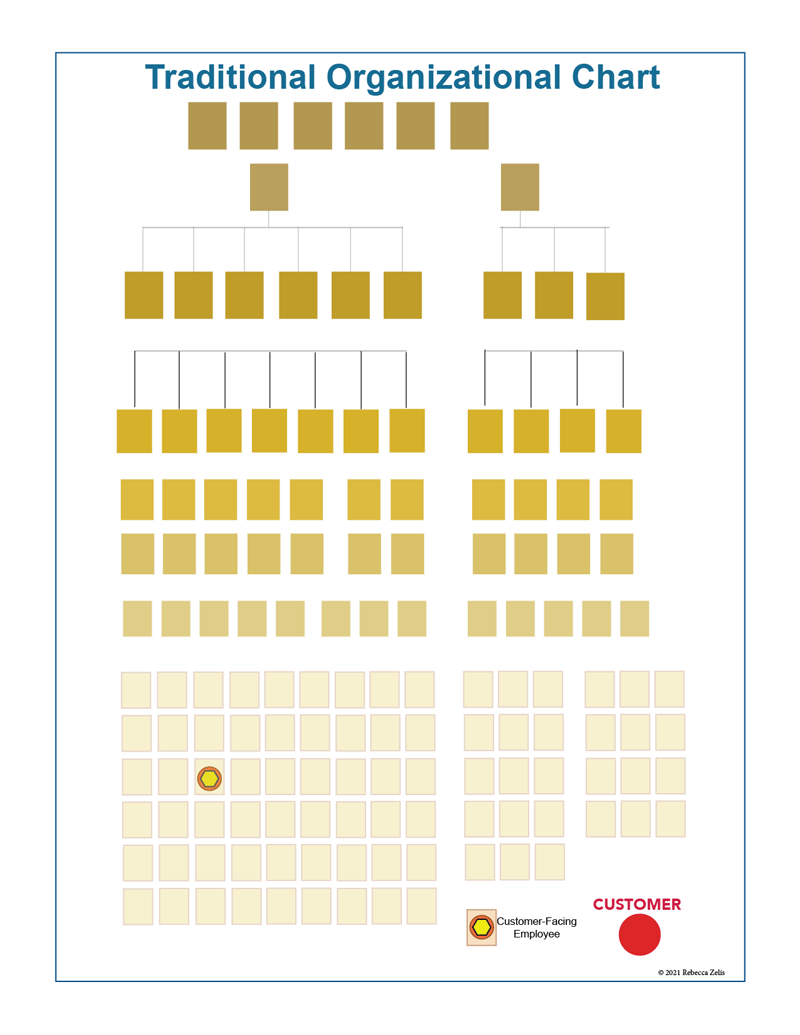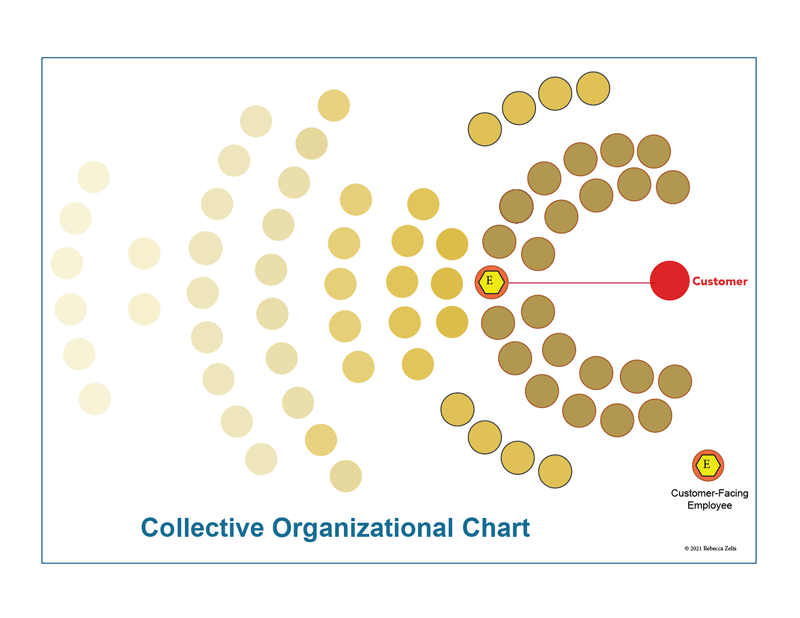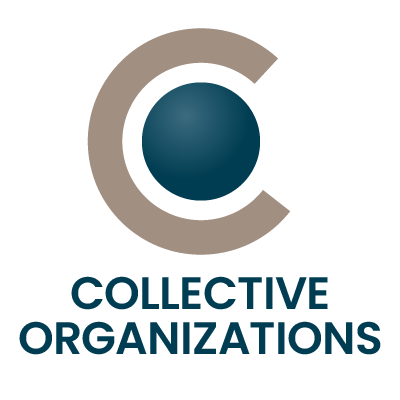Today’s workers are sorted into castes, fragmenting services and limiting employees' ability to collaborate, solve problems, and provide client-centered services.
These hierarchies:
- Make it difficult for employees to build authentic relationships with customers.
- Negatively impact employees' sense of efficacy and well-being.
- Silo workers based on department and status.
- Prevent collaboration and exchange of ideas.
- Increase errors, safety hazards, and turnover.
- Cyclically reinforce problems in our systems.

Obsolete hierarchies can limit an organization's effectiveness
A new organizational structure removes implicit assumptions in hierarchical models that place certain employees at the “bottom” and others at the “top.” Reframing leadership as supportive and collaborative rather than directive helps employees recognize their interdependence and promotes a new way of collaborating. Because the relationship between an employee and customer are paramount, customer-facing employees and support staff should never be relegated to the “bottom” of a hierarchy!
These changes are a necessary response to the way our culture has changed. People who have been empowered by unprecedented access to information and resources want to feel that their work is meaningful. An environment that promotes equity and collaboration shows how people at all levels of work and expertise can have a positive and valuable impact on customers and on each other.
Collective Organizations prioritize the interaction between an employee and the customer.


